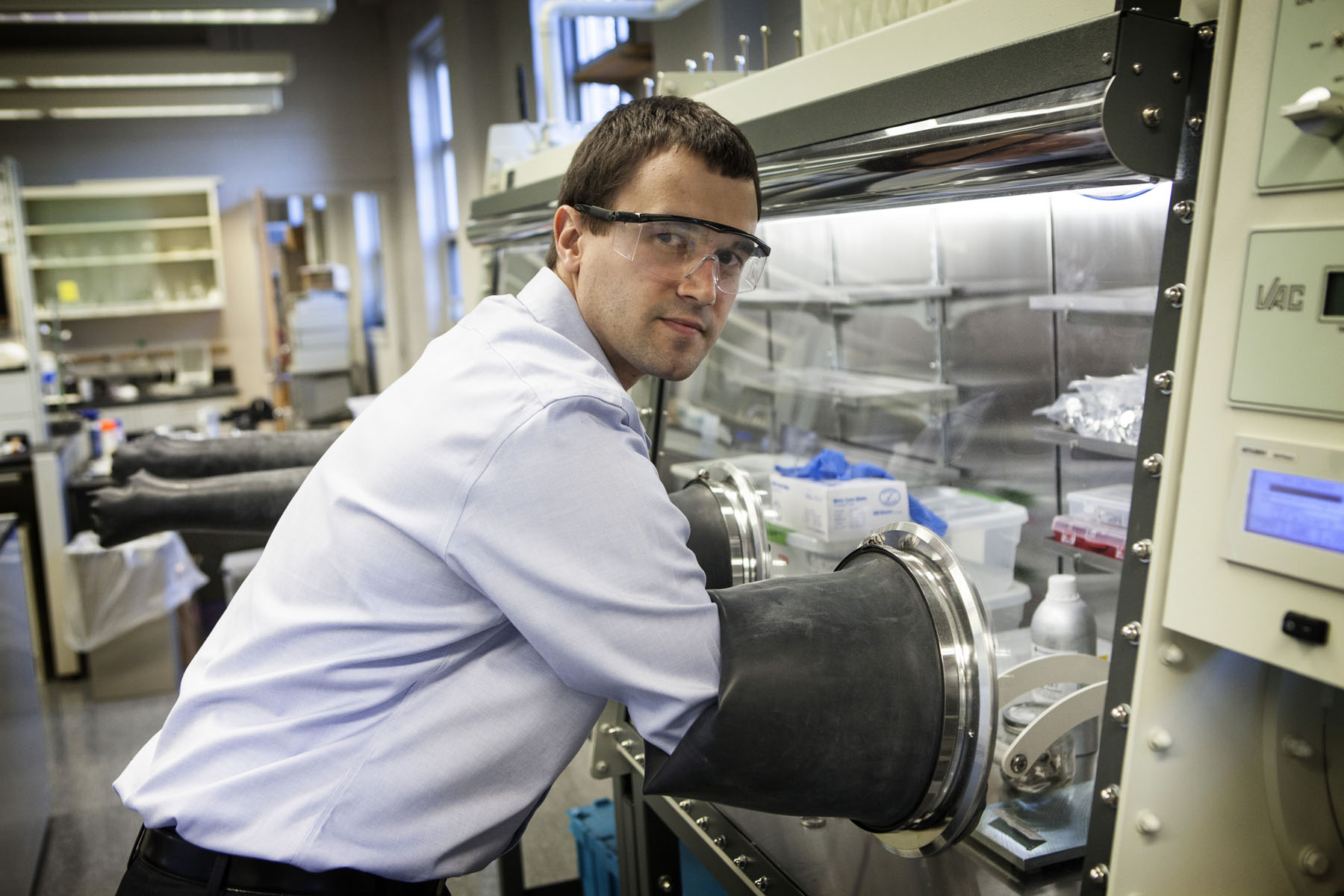As fuel prices rise, cheaper (and cleaner) forms of energy become more attractive and important to consumers. Gas-electric hybrid cars such as the Toyota Prius and Ford Fusion have grown in popularity, and fully electric cars may be the wave of the future.
But greater integration of battery-powered or battery-assisted vehicles will require new types of batteries with higher energy densities, lower weight, better safety, high reliability and lower cost (currently, hybrid vehicle batteries typically cost in the range of a few thousand dollars).
Gary Koenig, a new assistant professor of chemical engineering in the School of Engineering and Applied Science, is part of the effort to identify, analyze and improve materials to make better batteries for the transportation sector.
“Energy storage is a major challenge and will require new innovations in battery materials, chemistries and architectures,” he said.
Koenig came to U.Va. last January from a post-doctoral fellowship at Argonne National Laboratory near Chicago, where he focused on research to replace some of the most expensive components of lithium batteries with lower-cost materials that have higher energy density.
He continues the work at U.Va., investigating the design of new materials and materials chemistries, and is contributing to the University’s partnership with Rolls-Royce, which brings together that company, the commonwealth’s top research universities and other leading industrial companies in an effort to speed up the development of new technologies. The centerpiece of the Rolls-Royce-funded project is the Commonwealth Center for Advanced Manufacturing in Prince George County, which seeks to bring technological innovations out of campus laboratories and propel them into production lines.
Koenig’s research involves the synthesis, characterization and evaluation of the properties of materials. His focus primarily is on materials for rechargeable batteries for motor vehicles, but could have applications for intermittent renewable energy sources, such as wind and solar power backups used when weather conditions limit energy generation.
“There is no single battery for every use, and there always are tradeoffs, so we are working to develop new and better batteries for a range of uses,” Koenig said. “And batteries for hybrid vehicles are a hot growth market. We keep seeking new materials and ways to configure the materials to optimize the energy density and storage capacity of those batteries.”
The goal is to lower the cost and weight of rechargeable batteries, increase the length of time they can hold a charge under heavy use, increase their life span, and shorten the time it takes to recharge a battery. Koenig said an ideal would be to someday have batteries that could re-charge as quickly as it currently takes to refill a vehicle with liquid fuel.
Koenig said batteries work by converting chemical energy into electrical energy. Primary batteries are the non-rechargeable type used for TV remote devices, for example; secondary batteries are rechargeable.
The rechargeable batteries – the type Koenig works on – are designed to reverse the process of converting chemical energy to electrical, by allowing, through a charge, electrical energy to be converted to chemical energy for later use as electrical energy.
While such batteries today are far better than predecessors, they will continue to get better with improved technologies; becoming lighter with greater energy storage capacity, and, eventually, cheaper as lower-cost materials are discovered and fabricated.
“It took many decades of battery technology development from the use of lead acid 150 years ago – which is still used – to the much more sophisticated batteries of today, but it’s a fairly slow process of development because of the challenges of discovering and configuring different materials,” Koenig said. “We won’t see the rapid pace of development that occurs with computer electronics, but we will continue to develop less expensive and lighter batteries that will store more energy.”
Media Contact
Article Information
December 6, 2012
/content/chemical-engineer-koenig-working-toward-better-batteries-transportation

